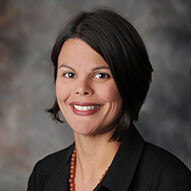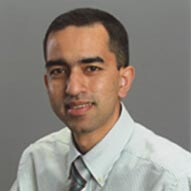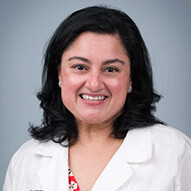Pediatric chronic lung disease (CLD)
Pediatric chronic lung disease (CLD) means that there is damage to the newborn’s lungs. The lungs trap air, collapse, fill with fluid or produce extra mucus, making it hard for the infant to breathe. With the help of our doctors, nurses, and other staff at Children's Health℠, most babies with chronic lung disease at birth will survive. In time, many outgrow most of their lung problems.
What is pediatric chronic lung disease (CLD)?
Respiratory problems immediately following birth (also known as neonatal) most often are seen in premature babies. This is because their lungs have not had enough time to develop fully. However, even full-term infants can have breathing concerns if they have other illnesses.
Risk factors
Prematurity
Infections in the mother
Secondary inflammation in the mother and womb, following an infection
What are the signs and symptoms of pediatric chronic lung disease (CLD)?
Difficulty, among other symptoms, there is rapid and difficult breathing and grunting; flared nostrils and weight loss.
How is pediatric chronic lung disease (CLD) diagnosed?
There may be a number of tests for your child, both to establish a diagnosis and to monitor treatment. All of the doctors, nurses, and technicians involved in your child’s care have specialized training. In addition, they are all highly experienced in the special techniques needed to safely work with even the tiniest baby.
Your pediatrician will perform a medical exam of your infant, looking for any symptoms of lung deficiency. These will include how fast the child breathes, if breathing is hard work, nasal flaring or the use of muscles in the chest that aren’t normally used to breathe. The doctor will also see if there is any blueness of the lips. Tests can confirm suspected cases and help determine specific problems.
Your child will probably have a blood gas test done at intervals. This measures the levels of oxygen and carbon dioxide to see how well your child’s lungs are getting oxygen into the blood and carbon dioxide out.
Spirometry is another commonly used lung test. Your child will breathe into a mouthpiece attached to a recording device called a spirometer. The test looks at things such as the amount of air exhaled with force after inhaling deeply, how quickly air is exhaled, and the amount of air left in the lungs after a normally exhaled breath.
What are the causes of pediatric chronic lung disease (CLD)?
Among other complex causes are prematurity, illness or infection and side effects of needed mechanical ventilation and supplemental oxygen.
How is pediatric chronic lung disease (CLD) treated?
The main focus of the treatment team will be on helping your child breathe more easily. This reduces stress on the body and helps the lungs mature and heal on their own.
Oxygen will be given to help your baby breathe better. It may be given through a tube in the nose or mouth. Another option is using a hood that covers the head entirely. If needed, a machine called a ventilator helps babies who can’t breathe on their own.
Medication
Bronchodilators may be used to open up the airways.
Corticosteroids are often used to lessen inflammation.
Diuretics are given to keep fluid from building up in the lungs.
Babies with breathing problems burn a lot of calories. They need extra proteins and calories to keep growing at a normal rate. In addition, they may not be able to eat directly from bottle or at the breast. High-calorie and -protein mixtures may be given directly through a tube put in the stomach, in the nose, or into a vein.
Pediatric chronic lung disease (CLD) doctors and providers
 Folashade Afolabi, MDPediatric Pulmonologist
Folashade Afolabi, MDPediatric Pulmonologist Steven Copenhaver, MDPediatric Pulmonologist
Steven Copenhaver, MDPediatric Pulmonologist Andrew Gelfand, MDPediatric Pulmonologist
Andrew Gelfand, MDPediatric Pulmonologist Peter Luckett, MDPediatric Pulmonologist
Peter Luckett, MDPediatric Pulmonologist Devika Rao, MDPediatric Pulmonologist
Devika Rao, MDPediatric Pulmonologist Yadira Rivera-Sanchez, MDPediatric Pulmonologist
Yadira Rivera-Sanchez, MDPediatric Pulmonologist Pravin Sah, MDPediatric Pulmonologist
Pravin Sah, MDPediatric Pulmonologist Peter Schochet, MDPediatric Pulmonologist
Peter Schochet, MDPediatric Pulmonologist Preeti Sharma, MDPediatric Pulmonologist
Preeti Sharma, MDPediatric Pulmonologist Loren Glasser, MDPediatric Pulmonologist
Loren Glasser, MDPediatric Pulmonologist